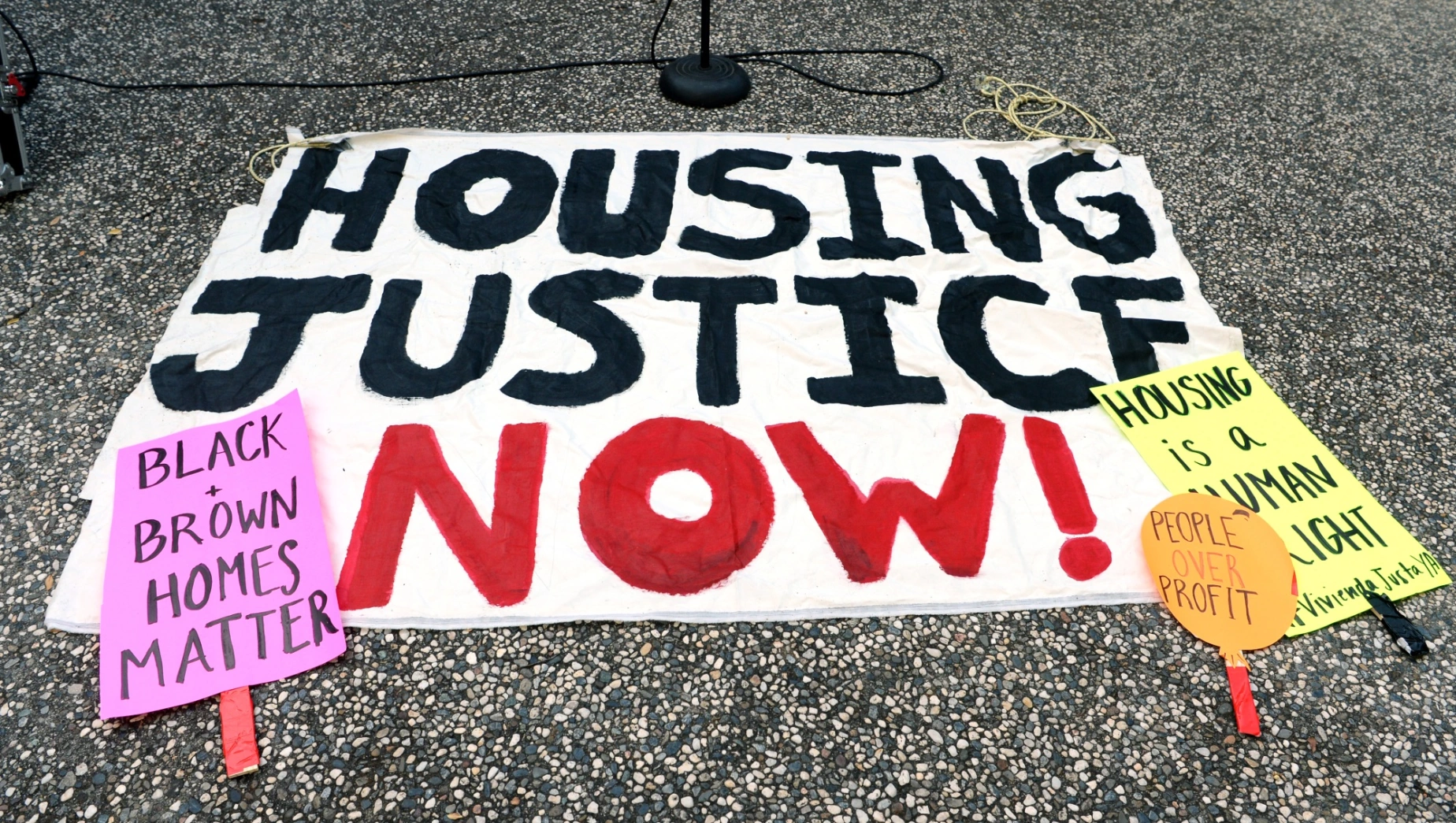Bay Area renters could be in jeopardy amid new wave of aid denials

Da Vina Teasley paid the rent regularly at her Richmond home for two decades before COVID-19 hit.
The pandemic took away her job, sent her to the hospital for a week, and now threatens to leave her family homeless. Teasley applied for $40,000 in rental assistance in December for the first time, and was rejected by the state program for “inconsistent or unverifiable information.”
Despite repeated calls to the state by Teasley and her attorney at the Alliance of Californians for Community Empowerment, they haven’t been able figure out what more documentation the state needs.
Teasley and her two school-aged children have been left in limbo as they appeal their denial, and may have to leave their long-time home. “I feel bad,” Teasley said, “staying in someone’s house I can’t afford.”
The state emergency rental assistance program, designed to help struggling renters from becoming homeless during the global health crisis, closed to new applications April 1. Case workers have sped up processing of existing requests, state officials say. But the number of rejected applications has also started to mount — now totaling at least 13,600 renter families like Teasley’s across the Bay Area, according to analysis of state data by the National Equity Atlas for the Bay Area News Group.

The numbers suggest to experts a looming displacement of thousands of renters in coming weeks and months. Since April 1, most landlords can file evictions for nonpayment — an action largely prohibited since March 2020.
“We continue to be extremely concerned about displacement,” said Sarah Treuhaft of PolicyLink, one of the organizations analyzing state relief data. “We are also concerned about denials, and whether they are for legitimate reasons.”
Officials with the state department of Housing and Community Development (HCD) declined relatively few applications in the first several months of the program. But new data suggests that about one in five Bay Area applications to the state program in some counties have been rejected. The data does not include local relief programs in San Francisco, Santa Clara and Alameda counties, or county-wide programs run in Marin and Sonoma counties.
About 21% of Alameda County applicants to the state program have been denied, the highest rate in the region, followed by San Francisco (16%), Contra Costa and Napa (14%), San Mateo (12%), Santa Clara and Solano (10%), according to the analysis.
In a statement, HCD said workers are processing applications faster — meaning more denials as well as more money paid out to eligible tenants.
“Denials are only issued for two primary reasons, either an application has been nonresponsive and thus eligibility cannot be determined or the applicant is not income qualified due to income or other eligibility factors,” the agency said in a statement. “Denials are ultimately designed to either foster reengagement by an applicant or allow the program to focus on active applications.”
The $5.5 billion aid program, an unprecedented response to the global pandemic, closed last month as funding and health risks wound down. The rental relief effort, the largest in the U.S., has funneled $2.85 billion to more than 250,000 California landlords and tenants since it launched in March 2021. Another 226,000 applications have been filed and are awaiting processing.
HCD says it is making more than $100 million in payments to about 12,000 households every week.
But advocates for tenants and landlords say more denials mean a drop in aid that will drive up displacement and hurt small, struggling landlords.
Jenny Zhao, a leader of the landlord association Business and Housing Network, said many small property owners have been accepting lower payments, or even waiving some rent, while they wait for the state to decide on relief.
Zhao has two tenants in San Jose with applications that have been pending for months. She’s called and emailed HCD, but has not gotten a final decision. Landlords cannot collect relief if they evict a tenant with an active application or appeal. Zhao’s choice: try to remove her tenants and lose potential relief funds, or allow them to stay rent free through June.
“We all know, once that number goes up, there’s no way they can pay it,” Zhao said. “I want to know if they’re approved or denied.”
Critics say the application process remains complicated, and overburdened case workers offer conflicting requests for documents or are slow to respond.
The state considers an applicant non-responsive if they have not returned messages or emails for 20 days. After another 60 days of not hearing from an applicant, the request is denied. Landlords and tenants have 30-days from denial to appeal.
Housing lawyers for ACCE say they have seen a dramatic rise in denials in recent weeks, many due to an applicant not responding before their deadline. But lawyers say the state has not been contacting tenants in their preferred language, or has been sending emails to renters who want to be alerted by phone or text.
Case workers have also been asking for information that is not required, such as a written lease. The additional hurdles have been hardest for immigrant families to manage, said ACCE attorney Jackie Zaneri.
“We know that tenants have been slipping through the cracks,” she said.
Teasley has been making partial payments, and is back to working full time as an accounts clerk for a manufacturing company. She grateful her landlord, a retired widow, has been patient. “I’ve just been getting behind and behind,” she said. “COVID was a bad time.”

